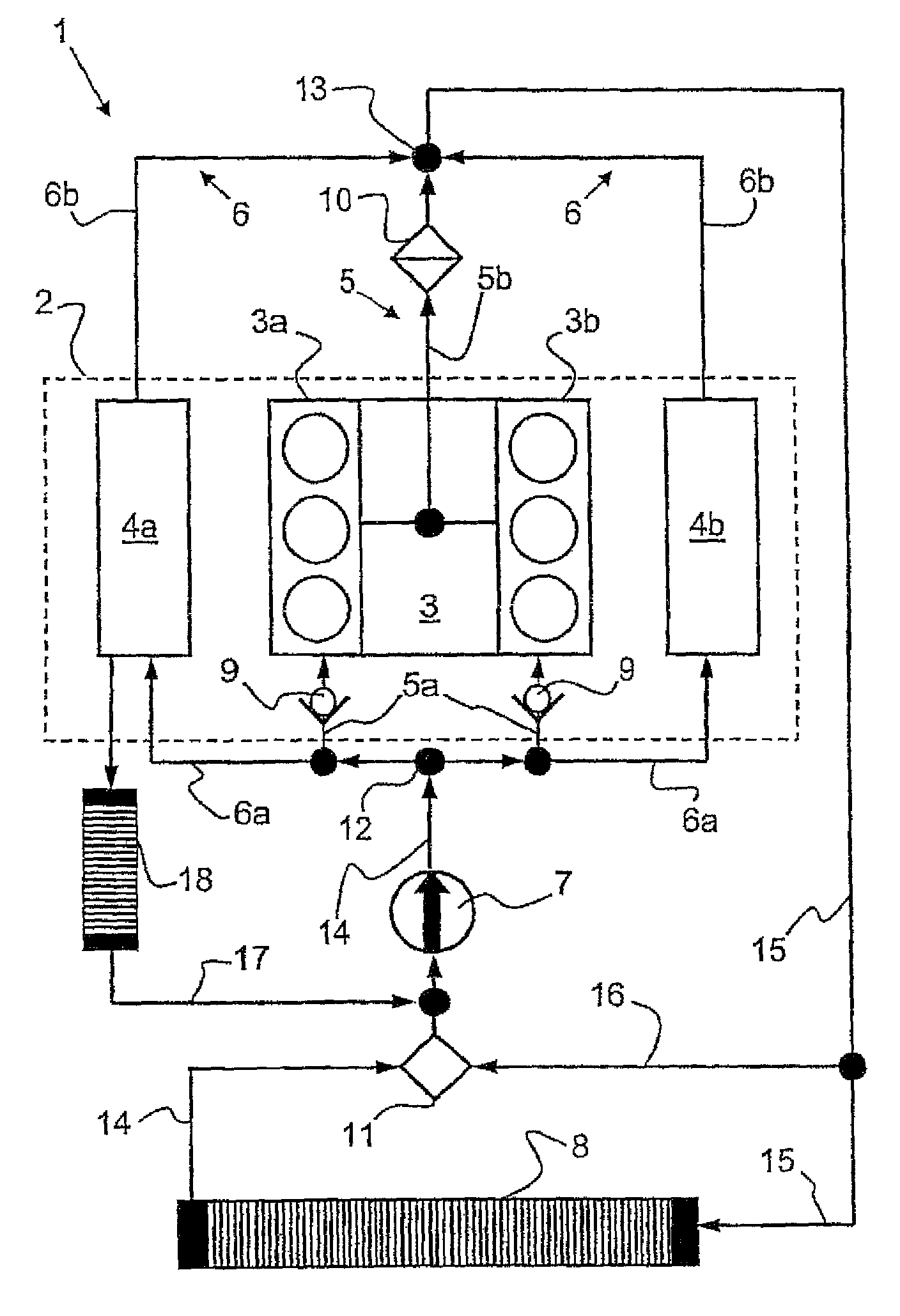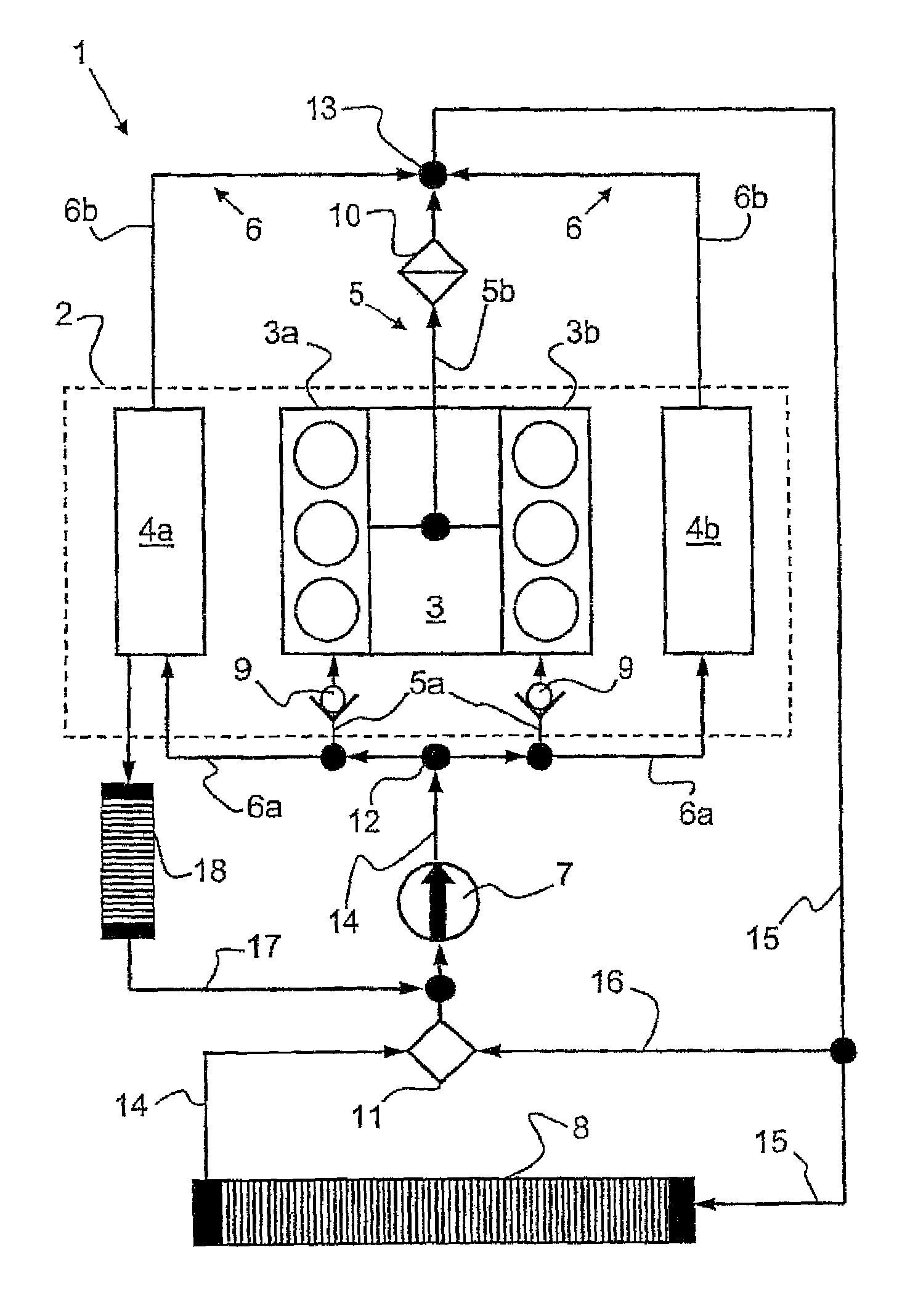Coolant circuit for an internal combustion engine
a technology of internal combustion engine and cooling circuit, which is applied in the direction of machines/engines, mechanical equipment, cylinders, etc., can solve the problems of slowing down the heating of the cylinder block, and achieve the effect of quick and evenly heated
- Summary
- Abstract
- Description
- Claims
- Application Information
AI Technical Summary
Benefits of technology
Problems solved by technology
Method used
Image
Examples
Embodiment Construction
[0014]The depicted embodiment is to be understood as illustrative of the invention and not as limiting in any way. It should also be understood that the figure is not necessarily to scale and that embodiments are sometimes illustrated by graphic symbols, phantom lines, diagrammatic representations and fragmentary views. In certain instances, details which are not necessary for an understanding of the present invention or which render other details difficult to perceive may have been omitted.
[0015]Turning now to the FIGURE, there is shown a schematic illustration of a coolant circuit according to the present invention, generally designated by reference numeral 1, for an internal combustion engine 2. The coolant circuit 1 includes a coolant pump 7 for producing a coolant circulation in the coolant circuit 1, and a main heat exchanger 8 for heat exchange between ambient air sweeping about the main heat exchanger 8 and coolant flowing through the main heat exchanger 8. The internal comb...
PUM
 Login to View More
Login to View More Abstract
Description
Claims
Application Information
 Login to View More
Login to View More - R&D
- Intellectual Property
- Life Sciences
- Materials
- Tech Scout
- Unparalleled Data Quality
- Higher Quality Content
- 60% Fewer Hallucinations
Browse by: Latest US Patents, China's latest patents, Technical Efficacy Thesaurus, Application Domain, Technology Topic, Popular Technical Reports.
© 2025 PatSnap. All rights reserved.Legal|Privacy policy|Modern Slavery Act Transparency Statement|Sitemap|About US| Contact US: help@patsnap.com


